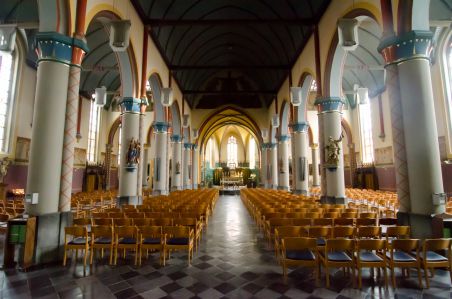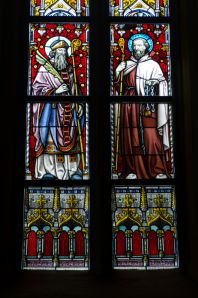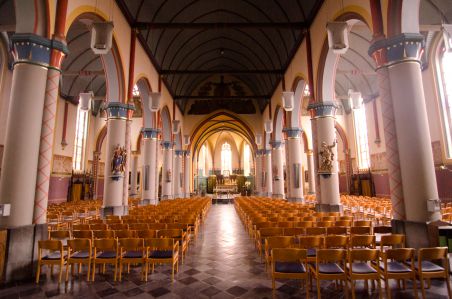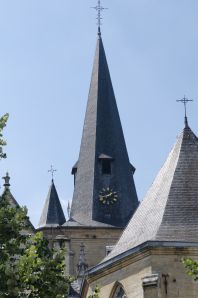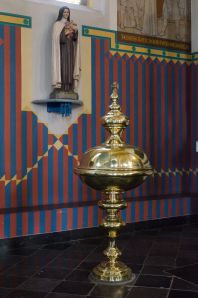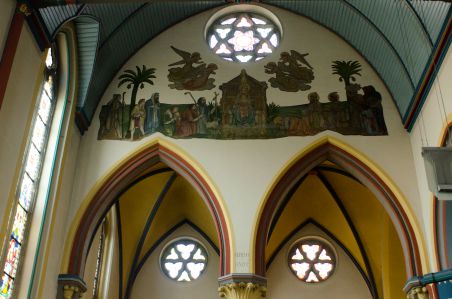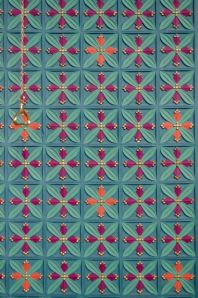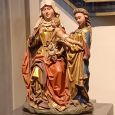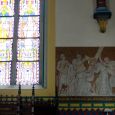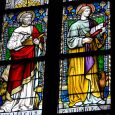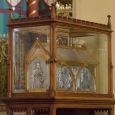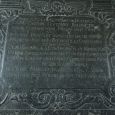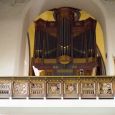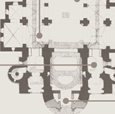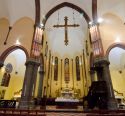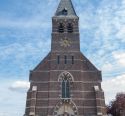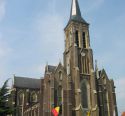Church | XV-XX | Neogothic | Catholic Church




Map
Opening hours
01 January - 31 December
Mon 9.00 - 17.00
Tue 9.00 - 17.00
Wed 9.00 - 17.00
Thu 9.00 - 17.00
Fri 9.00 - 17.00
Sat 9.00 - 17.00
Sun 9.00 - 17.00
Guided tour
Religious offices
Saturday 5 pm
Sunday 11 am
Description
This church was founded as early as the eight century by the abbey of Munsterbilzen. It is dedicated to Saint Maurice and his companions. The pentagonal choir dates back to the Gothic period as well as several late Gothic statues.
The church was completely destroyed after a fire in 1636 and was afterwards reconstructed in Baroque style. The tower was built in 1667. In 1906 the church was extended and obtained its present state: It is a typical hall church where the aisles and the nave have the same height and where the transept is not wider than three bays. The interior was decorated in neo-Gothic style. The church was thoroughly renovated in 1995 and the late Gothic and Baroque sculptures were integrated in the neo-Gothic interior.
Note the beautiful stained glass windows, the wooden barrel vaulted ceilings, the monumental gravestones, the beautiful Stations of the Cross and the neo-Gothic polychromatic paintings. The Brammertz organ dates back to the eighteenth century.
The statue of Saint Anne (mother of Mary), Saint Mary and baby Jesus, which stands in the back of the church, was created between 1520 and 1530 in a workshop either in Liège or in the Maasland. Saint Anne wears a headscarf (a symbol of widowhood) and Maria wears a diadem.
The statue of Saint Barbara on the right side of the nave comes from a former beguine church in Bilzen. It was created by a known artist from the local area, from Dutch Limburg: Jan Van Steffensweert. The statue represents Saint Barbara with the following attributes: an open book and a tower with three floors and three windows.
Next to Saint Barbara is a statue of the patron saint of this parish: Saint Maurice. He used to be the captain of the Theban legion and is shown here dressed as a Roman centurion. Together with his companions he died a martyr’s death at Agaune in Valais, Switzerland.
The tombstone of the van Bocholtz family was discovered underneath the high altar and was moved to a new place under the tower. Edmond van Bocholtz was a Grand Commander of the Teutonic Order in Alden Biesen. In 1659 he placed his family members underneath this tombstone in order to establish this church as the burial place of his kin. The Grand Commander, who himself was not buried in this church, is also portrayed on the painting of the kneeling Saint Dominic. On this painting, Saint Dominic is receiving the Rosary from the hands of Our Lady while simultaneously giving a rosary to the Grand Commander. It was painted by Walthère Daméry (1614-1678) and used to be placed above the altar. The painting refers to the brotherhood of the Holy Rosary which was inaugurated in 1661. In the background of the painting Saint Gregory of Cappadocia is holding the banner of the Teutonic order.
KIKIRPA : Photo-library online
See the treasures of this church online on erfgoedplus.be
Photos
Remarkable elements
Sculpture group Virgin and Child with Saint Anne
This group that was created between 1520-1530 in a Maasland or Liège studio, is one of the rare witnesses of this Gothic style. The Christ Child seeks to free himself from the standing Madonna’s embrace, reaching for the grapes that Saint Anne is holding in her right hand, while grabbing at the wing of the dove in Saint Anne’s left hand with his other hand. Mary, who is clearly smaller than Anne, wears a tiara, and Saint Anne a widow’s cap.
Way of the cross
Late 19th century and early 20th century mural by Charles Peeters from Brussels. His neo-Gothic paintings are, just like those by G. Meunier, integrated into a color palette that is based on the tradition by Viollet-le-Duc.
Stained glass windows
In 1893-1984, stained glass windows designed by J. Osterrath, glass painter from the village of Tilff in Liège, were already installed in the choir. However, most of the stained glass windows were only executed after the major renovations of 1904-1905. By the same hand and faithfully adhering to a consistent visual scheme, they form together with the murals by Meunier, a well-preserved, completely neo-Gothic whole.
Box reliquaries
Two box reliquaries in a display case, neo-Gothic (1935), gifts from Dean Paquay to this church. The reliquaries are dedicated to Saint Bernadette Soubirous and Saint John Vianney.
Tombstone of the van Bocholtz family
The tombstone of the van Bocholtz family was discovered underneath the high altar and given a new placement under the tower. In 1659, Edmond van Bocholtz, Grand Commander of the German order at the castle of Alden Biesen, had his family members added underneath this stone with the intent to make this church the burial place for his family.
The Grand Commander, who was buried elsewhere, is depicted in the painting of the kneeling Saint Dominic. Saint Dominic receives the Rosary from the hands of Our Lady and simultaneously gives a rosary to the Grand Commander. This canvas by Walthère Daméry (1614-1678), once adorned the main altar and refers to the Confraternity of the Holy Rosary founded in 1661. In the background, Saint Gregory the Illuminator is holding the banner of the Teutonic Order.
Brammertz organ
Organ from 1709 by Brammertz, thoroughly renovated in 1849 by Van Dinter, and restored again in 1876 by M. Peerenboom from Maastricht city, and in 1999 by Nijs & Sons from the town of Nieuwerkerken based on a design by Spectrum Hasselt.
Nearby
Circuit
Rulers and saints around Alden Biesen
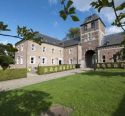
Religious heritage around Alden Biesen (cycle route 1) - This route leads you past the mighty land commandery of Alden Biesen and the abbey of Munsterbilzen. Discover what traces their influential rulers left behind in the area.
In the footsteps of the priest
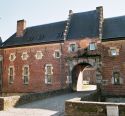
Rulers and saints, religious heritage around Alden Biesen (car tour 1) - Less sporty? Or is it raining cats and dogs? We have connected the most interesting sights with a route adapted to the car (in Dutch).



